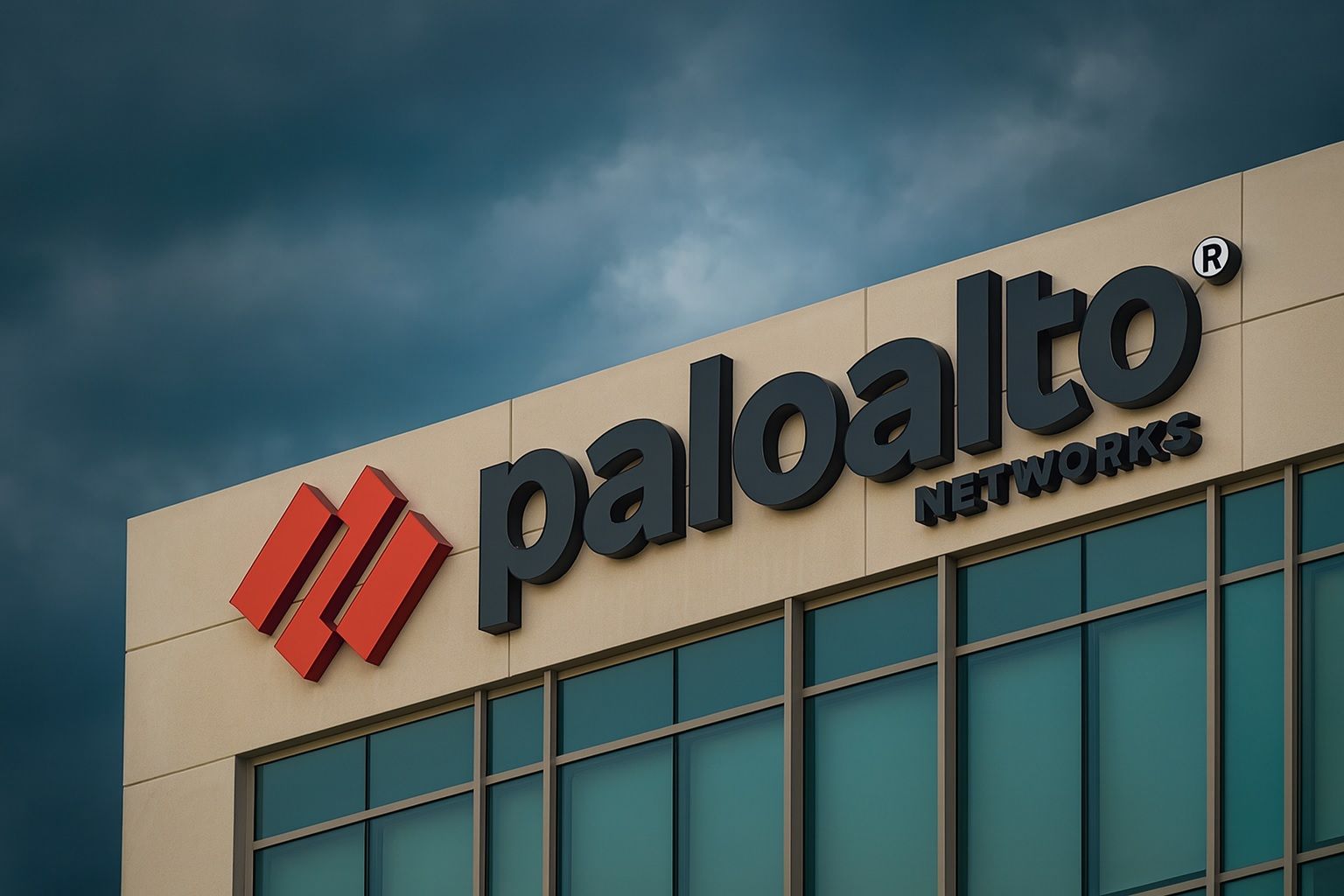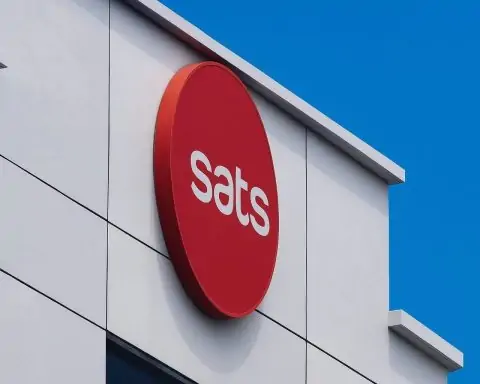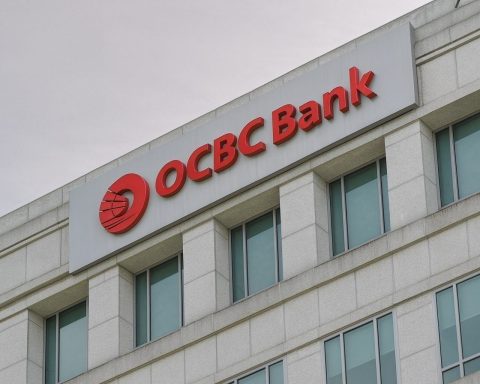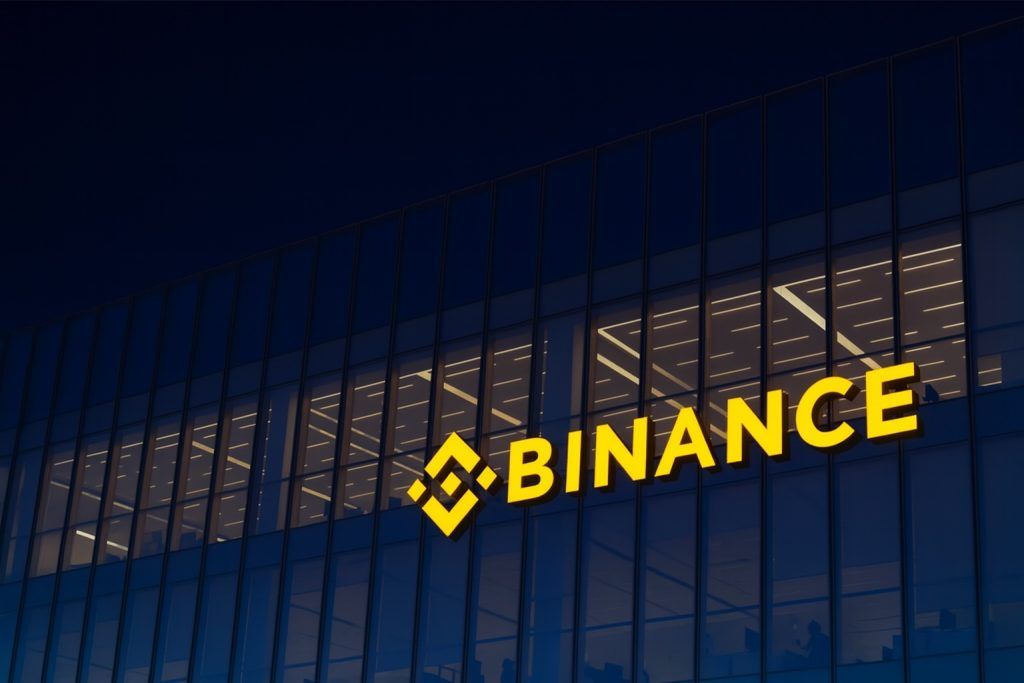- Recent Price & Valuation: As of early Oct 2025, PANW trades around $210–216 per share [1] (closing ~$208.55 on Oct 10 [2]), up roughly 14% year‑to‑date [3]. Five‑year annualized return is ≈37% [4]. Market cap is roughly $135–140 billion [5], making it the largest pure-play cybersecurity firm by revenue and market cap [6]. By valuation, analysts estimate PANW’s forward P/E is ~50× [7] (trailing P/E is even higher), vs ~124× for fast-growing peers like CrowdStrike [8].
- Recent News: In late July 2025 PANW announced a blockbuster acquisition of CyberArk (identity-security) for ~$25 billion [9]. This would broaden PANW’s platform (identity protection) but initially sent PANW shares down ~8% on integration concerns [10]. In early October, Unit 42 (PANW’s threat intel arm) exposed a major China-linked hacking campaign targeting government email systems [11], underscoring surging cyberthreats. No new earnings were reported in the past week, but the company has been building momentum with AI initiatives and gearing up for its Oct 28 Ignite security conference [12].
- Analyst Outlook: Wall Street remains broadly bullish. Roughly 40+ analysts cover PANW, with a consensus “Buy/Strong Buy” rating [13]. The average 12-month price target is about $215–220 [14] (upside ~3–10%), with the highest targets around $230–250+ [15] [16]. In recent weeks many firms have raised their targets: e.g. Wedbush to $225 and Tigress to $245 [17].
- Q4 FY2025 Results: For the quarter ended July 31, 2025, PANW reported revenue $2.50 B (+16% YoY) and non‑GAAP EPS $0.95 [18] [19], beating forecasts. Next-Gen (AI-driven) security ARR grew 32% YoY to $5.6 B [20] [21], and backlog (remaining performance obligations) was $15.8 B (+24%) [22] [23]. GAAP profitability was lower (net income ~$254 M), but on a non-GAAP basis operating margin was ~30% and free-cash-flow margin ~40% [24].
- Guidance & Financials: Management sees FY2026 revenue ~$10.48–10.53 B (+14%) and EPS $3.75–3.85 [25] [26], both above consensus expectations [27] [28]. Q1 FY2026 is projected ~15% revenue growth (to $2.45–2.47 B) [29]. Analysts note this guidance reflects continued strength from cloud and AI security demand [30]. As of Aug 2025, PANW had surpassed a $10 B revenue run-rate [31]. The firm has no debt (cash-rich balance sheet) and generated robust free cash (becoming a “Rule-of-50” stock: ≥50% combined growth & FCF margin for 5th year [32]).
- Industry Trends: Global cybersecurity budgets are rising fast (IDC projects +12% in 2025 [33]) amid record cyberattacks and an “AI arms race” [34] [35]. Customers are consolidating security tools into cloud‑AI platforms [36] [37]. PANW’s strategy – a unified platform spanning network firewalls (Strata), cloud security (Prisma), AI-driven operations (Cortex/XSIAM) and now identity (CyberArk) – is well‑aligned to these trends [38] [39].
Latest Stock Performance
PANW stock has rallied in recent months. It closed ~$208.55 on Oct 10, 2025 [40] and traded near $215–216 on Oct 8–9 [41]. This puts the shares near multi‑month highs, up ~3–4% over the prior week [42]. Year‑to‑date, PANW is up roughly 10–15%, despite some volatility on acquisition news. The stock is still below its all‑time high (~$216 reached in early Oct). Momentum indicators (not shown) suggest bullish technicals, and it trades above key moving averages. Over five years the stock has returned ~37% annually [43], reflecting strong growth. By comparison, fellow cybersecurity names like CrowdStrike (CRWD) have also soared (~+40% YTD) but trade on even loftier multiples [44].
Recent News & Developments (Early Oct 2025)
- Cyber Threats & Unit 42 Intel: In the first week of October, Unit 42 – Palo Alto’s threat intelligence team – uncovered “Phantom Taurus,” a sophisticated China-linked hacking campaign targeting foreign government email systems [45]. This high-profile finding underscores rising cyberwarfare and likely drives demand for PANW’s advanced security tools. The discovery made headlines in tech press and reinforces the urgency of robust cybersecurity defenses.
- AI Initiatives & Marketing: Palo Alto is capitalizing on the AI security boom. In late Sept 2025 it launched a clever AI-generated advertising campaign to highlight its innovation culture [46]. The company is also teasing new AI-focused product announcements at its Ignite conference (Oct 28). These moves bolster investor enthusiasm that PANW is at the forefront of AI-driven security.
- Acquisition Update: The biggest recent development was the CyberArk acquisition announcement (July 30, 2025). While not in October, its effects are still fresh: PANW agreed to buy CyberArk for ~$25 B [47]. CyberArk is a leader in identity/privileged-access security (strong growth ~$1 B revenue in 2024) [48]. The deal came at a ~29% premium [49] and initially sent PANW’s stock down ~8% on concerns about digesting such a large purchase [50]. Analysts view it positively long-term, noting it instantly gives Palo Alto a full-stack “zero trust” platform and access to CyberArk’s customer base [51]. The acquisition is expected to close in FY2026 [52]. No new acquisition news emerged in early October, but investors will be watching for integration progress and any guidance updates.
- Other News: Global tech is abuzz with cybersecurity funding. The recent Netskope IPO (Sept 2025) and rising venture investment in AI security signal tailwinds for incumbents like PANW. No negative news specific to PANW has surfaced; notably, Palo Alto has avoided major outages or scandals (unlike last year’s CrowdStrike update incident). One Reuters piece (July 2024) noted a brief dip after PANW’s CEO mentioned an industry outage, but that was past quarter and was overshadowed by strong results [53]. Overall, recent news is constructive for PANW’s story.
Financials and Earnings Performance
Palo Alto’s latest quarter (Q4 FY2025 ended July 31, 2025) showed robust growth and profitability. According to the company release, Q4 revenue was $2.50 B (up 16% YoY) [54], with strength in both products (+19%) and subscription/services (+15%) [55]. GAAP net income was $253.8M ($0.36/share) [56]; on a non‑GAAP basis, EPS was $0.95 (up 27% YoY) [57]. For the full fiscal year 2025, revenue was $9.21 B (+15%) [58]. Key growth drivers include the transition to a software‑and‑subscription model and robust demand for cloud/AI security.
Profitability: Operating efficiency is high. Non‑GAAP operating margin is about 30% and free‑cash‑flow margin ~40% [59]. The company has been a “Rule-of-50” stock (combined growth + FCF ≥50%) five years running [60]. This outperforms most peers: for example, Cisco’s security business is much lower growth, and even CrowdStrike (high growth) is not yet profitable. Palo Alto’s ability to grow revenue double‑digits while maintaining high margins is a key competitive advantage [61].
Guidance: Management forecasts FY2026 revenue ~$10.48–10.53 B (about +14% YoY) and EPS $3.75–3.85 [62]. This guidance came in Aug 2025 and beat analysts’ estimates [63]. For Q1 FY2026 they guided $2.45–2.47 B (+15%) revenue and $0.88–0.90 EPS [64]. The optimistic outlook reflects confidence in continued cyber spending (especially on AI/cloud security) and solid renewal/backlog. Analysts note that the company is exceeding industry growth rates (IDC expects ~+12% global security spend in 2025 [65]) due to its platform pull.
Balance Sheet: Palo Alto is debt-free with ~15% of capital as cash [66]. Its strong cash flows fund R&D (~15–20% of sales) and acquisitions. Notably, the company repurchased ~$500M in stock during Q4 FY2025 (announced Aug ’25) [67], returning capital to shareholders. The CyberArk deal is structured with both cash and stock, and is expected to be accretive after close [68].
Technical & Fundamental Outlook
- Valuation: PANW trades at a high multiple – roughly 50–55× forward EPS [69]. This is below extreme peers like CRWD (~124× [70]) but well above the S&P 500. The rich valuation reflects robust growth and recurring revenue. Fundamental metrics are strong: 5‑year revenue CAGR ~20–25%, ARR +32% YoY [71] [72], and high margins [73]. However, any slowdown could trigger volatility given the premium stock price.
- Technical Position: Chart-wise, PANW is near 52‑week highs (recent pullback from all-time high ~$216). Its RSI has been elevated but not extreme, and it’s trading above its 50- and 200-day moving averages. The buy volume has accelerated on good news weeks, indicating bullish technical momentum. On the flip side, macro headwinds (like rising rates) or broad tech sell-offs could pressure it. Overall, analysts’ average one-year price targets are only modestly above current levels [74], suggesting limited short-term upside unless new catalysts emerge.
- Risks: Key risks include integration of CyberArk (scale and focus change), execution of new product rollouts, and market cycles. The stock’s forward P/E is among the highest of established tech names, meaning any guidance miss could cause a sharp pullback. Competition and substitute technologies (e.g. cloud providers offering native security) also pose long-term risks.
Analyst & Expert Commentary
Analysts and cybersecurity experts are largely bullish on PANW’s strategy and execution. For example, CEO Nikesh Arora stated in August 2025 that “demand for cybersecurity remains strong… customers look to us to secure their cloud and AI transformations” [75]. Morningstar’s analyst Malik Ahmed Khan highlighted PANW’s dual advantage: “the company benefits from both net new AI spending as well as a reallocation from services to products (via automation)” [76] [77]. He also noted the CyberArk deal expands cross-selling opportunities between both customer bases.
Wall Street bulls argue that PANW’s platform approach (integrating network, cloud, AI, and identity security) will drive sustained growth, citing multiple catalysts (new products, CyberArk synergies, AI automation) [78] [79]. They see recurring revenue and high retention as defensive during downturns. On the other hand, some cautions exist: Reuters Breakingviews pointed out that the CyberArk price may be inflated by AI hype, and integration risks could “wipe $16B off tech cred” if mismanaged [80] [81]. Indeed, analysts remind investors that at ~50× earnings, the stock has little margin for error [82].
Independent research firms also weigh in. For instance, a recent analysis noted PANW “is widely considered the world’s largest pure-play cybersecurity company” with a diversified suite and strong profits [83]. Competitor comparisons appear, with some analysts favoring PANW’s broad portfolio over peers’ niche focuses [84] [85]. However, high-growth names like CrowdStrike are sometimes preferred for pure AI-play exposure. For example, one market piece listed PANW, CrowdStrike, and Fortinet as top cyber stocks, but concluded “if you have to choose just one, CrowdStrike is best positioned for long-term growth,” citing CrowdStrike’s cloud-native, AI-first model [86]. This underscores the view that PANW’s mix of hardware (firewalls) and software could be a double-edged sword: it offers steady revenue but can’t grow as explosively as a pure-cloud vendor.
Competitor Comparison
- CrowdStrike (CRWD): Both sell advanced cybersecurity, but CrowdStrike is purely endpoint/cloud-based and earlier to market in AI-driven EDR/XDR. CRWD shares have rallied ~40% in 2025 [87], outpacing PANW. However, CrowdStrike is far more expensive (~124× forward earnings [88]) and has less profitability. PANW’s broad product line (including firewalls and cloud services) and profitability give it greater stability, while CrowdStrike has larger growth runway. After CRWD’s mid-2024 update issue, analysts note that PANW’s diversified platform reduces single-vendor risk [89] [90].
- Zscaler (ZS): A cloud‑native secure‑access (SASE) specialist. Zscaler reported Q4 FY2025 revenue of $719M and 21% YoY growth [91]. In Sept 2025, Zscaler raised its FY2026 revenue forecast to ~$3.27–3.28 B (above Street) [92], sending its stock up. PANW competes less directly here; ZS focuses solely on cloud edge security, whereas PANW covers network firewalls plus various cloud/SASE products (Prisma suite). Zscaler’s market cap (~$35–40B) and growth rate are solid but it remains a smaller, high‑growth player. Investors often weigh ZS’s pure cloud position against PANW’s broader, multi‑segment footprint.
- Fortinet (FTNT): A hardware-centric legacy player (firewalls) now adding cloud services (FortiCloud). FTNT’s growth has been ~10–15% YoY recently, slower than PANW’s low‑20s%. Fortinet is less expensive (P/E ~40×) but faces concerns about plateauing demand. In July 2025, Fortinet raised guidance after solid results, but some analysts worry the next firewall upgrade cycle could wane [93] [94]. A late-summer note observed “Fortinet’s stumble in late summer over a slow product refresh underscored how Palo Alto’s software-centric, AI-enhanced approach may be winning favor” [95]. In short, Fortinet is seen as the “old guard” with consistent products, while PANW is viewed as more innovative and higher margin.
- Others (Cisco, Check Point, etc.): PANW often picks up business as customers “rip and replace” older appliances. Cisco’s security unit is larger but lower growth. Recent news: Check Point said in July 2025 it isn’t seeking a buyer after peers like CyberArk/PANW moved, signaling some confidence in staying independent. Overall, PANW is regarded as a leader vs peers on innovation, especially with the CyberArk bolt-on.
Cybersecurity Industry Trends
The entire cybersecurity sector is on an upcycle. Key trends boosting PANW:
- AI-Driven Threats & Defense: Both attackers and defenders are using AI. Reports note an “AI vs AI” arms race [96]. Vendors (Microsoft, SentinelOne, IBM) are embedding AI copilots and agents in their products. PANW has launched Cortex XSIAM, marketed as an “AI-driven SOC platform” [97], and adds AI analytics across its portfolio. Rising AI threats (deepfakes, autonomous malware) are prompting enterprises to upgrade security, benefiting established players. Venture capital in “AI security” startups is surging (hundreds of millions in 2025) [98], validating the trend.
- Cloud & Zero Trust: As companies move workloads to cloud and hybrid models, they need unified security. Gartner/IDC data show budgets shifting from point products to integrated cloud platforms. PANW’s strategy (Strata + Prisma + Cortex + identity) aligns with the “Zero Trust” model. The CyberArk deal is explicitly aimed at identity/privileged access – a crucial element as “machine identities” proliferate [99] [100]. Broadly, independent reports note customers prefer fewer large vendors rather than many niche tools [101]. This consolidation trend plays to PANW’s acquisition-driven growth (14+ buys since 2019 [102]).
- Regulatory & Geopolitical Risks: Increasing regulations (like EU NIS rules) and geopolitical hacking (nation-state attacks) raise compliance-driven spending. Reuters noted that recent breaches at major companies (Microsoft, Disney, etc.) have spurred demand [103]. Also, cybersecurity is seen as national priority. Such factors underpin the sector’s 10%+ annual growth outlook worldwide. PANW, as a large US provider, benefits from both corporate and government spending increases.
- Competition & Innovation: New entrants (SASE startups, AI‑native companies) are emerging. PANW faces pressure to innovate continuously – for example, its rivals added AI modules and have mobile/cloud security offerings. Analysts point out the industry remains fragmented, so even big players must keep acquiring or developing new capabilities [104]. The next few years may see more M&A (PANW’s deal could trigger others, though some peers like Check Point balked for now).
Forecasts & Outlook
Analysts broadly project mid‐teens revenue growth for PANW in FY2026 and beyond [105] [106]. The company itself targets ~15% CAGR to 2030, aiming for $15 B ARR by 2030 (about triple current levels) [107]. Wall Street price targets tend to cluster in the low $200s by mid-2026 [108] [109], implying modest upside, but high-conviction bulls have targets $230–$250+ [110]. In the most optimistic scenario, some forecast PANW’s stock could double by 2030 if industry tailwinds and AI adoption continue unabated [111]. That would require sustained execution and more big wins.
Key factors for the medium/long term: successful integration of CyberArk (adding identity smoothly), continued growth in cloud and AI security segments, and further margin expansion. Independent analysts expect recurring revenue (subscriptions) will form an even larger share of revenue, boosting predictability. On the flip side, any market downturn could slow enterprise spending – though cyber budgets tend to be more resilient.
In summary, Palo Alto Networks enters late 2025 with strong momentum: solid recent earnings and guidance, a broad and expanding product arsenal (especially in AI and identity), and a leadership position in a fast-growing industry [112] [113]. If it executes well on its strategy, many experts believe PANW is well-positioned for further growth. However, its premium valuation means investors will watch execution closely – it’s a stock where missing targets could cause sharp moves.
Sources: Company press releases and regulatory filings [114] [115]; Reuters and TS2.tech reports [116] [117] [118] [119] [120] [121] [122]; analyst studies (MarketBeat, BullishBears) [123] [124]; industry research (IDC, Gartner); and expert commentary [125] [126].
References
1. ts2.tech, 2. www.marketbeat.com, 3. www.investing.com, 4. ts2.tech, 5. ts2.tech, 6. ts2.tech, 7. ts2.tech, 8. www.reuters.com, 9. ts2.tech, 10. www.reuters.com, 11. ts2.tech, 12. ts2.tech, 13. ts2.tech, 14. ts2.tech, 15. ts2.tech, 16. www.marketbeat.com, 17. ts2.tech, 18. www.paloaltonetworks.com, 19. ts2.tech, 20. www.paloaltonetworks.com, 21. ts2.tech, 22. www.paloaltonetworks.com, 23. ts2.tech, 24. ts2.tech, 25. www.paloaltonetworks.com, 26. ts2.tech, 27. www.reuters.com, 28. www.paloaltonetworks.com, 29. www.paloaltonetworks.com, 30. www.reuters.com, 31. www.paloaltonetworks.com, 32. www.paloaltonetworks.com, 33. www.reuters.com, 34. www.reuters.com, 35. ts2.tech, 36. ts2.tech, 37. ts2.tech, 38. ts2.tech, 39. ts2.tech, 40. www.marketbeat.com, 41. ts2.tech, 42. ts2.tech, 43. ts2.tech, 44. www.reuters.com, 45. ts2.tech, 46. ts2.tech, 47. ts2.tech, 48. www.reuters.com, 49. www.reuters.com, 50. www.reuters.com, 51. www.reuters.com, 52. www.reuters.com, 53. www.reuters.com, 54. www.paloaltonetworks.com, 55. ts2.tech, 56. www.paloaltonetworks.com, 57. www.paloaltonetworks.com, 58. www.paloaltonetworks.com, 59. ts2.tech, 60. www.paloaltonetworks.com, 61. ts2.tech, 62. www.paloaltonetworks.com, 63. www.reuters.com, 64. www.paloaltonetworks.com, 65. www.reuters.com, 66. www.paloaltonetworks.com, 67. www.reuters.com, 68. www.reuters.com, 69. ts2.tech, 70. www.reuters.com, 71. ts2.tech, 72. ts2.tech, 73. ts2.tech, 74. www.marketbeat.com, 75. ts2.tech, 76. www.reuters.com, 77. ts2.tech, 78. ts2.tech, 79. ts2.tech, 80. ts2.tech, 81. ts2.tech, 82. ts2.tech, 83. ts2.tech, 84. ts2.tech, 85. ts2.tech, 86. www.investing.com, 87. www.reuters.com, 88. www.reuters.com, 89. www.reuters.com, 90. ts2.tech, 91. www.reuters.com, 92. www.reuters.com, 93. www.reuters.com, 94. www.investing.com, 95. ts2.tech, 96. ts2.tech, 97. ts2.tech, 98. ts2.tech, 99. www.reuters.com, 100. www.reuters.com, 101. ts2.tech, 102. ts2.tech, 103. www.reuters.com, 104. ts2.tech, 105. ts2.tech, 106. ts2.tech, 107. ts2.tech, 108. ts2.tech, 109. www.marketbeat.com, 110. ts2.tech, 111. ts2.tech, 112. ts2.tech, 113. ts2.tech, 114. www.paloaltonetworks.com, 115. www.paloaltonetworks.com, 116. www.reuters.com, 117. www.reuters.com, 118. www.reuters.com, 119. ts2.tech, 120. ts2.tech, 121. ts2.tech, 122. ts2.tech, 123. www.marketbeat.com, 124. ts2.tech, 125. ts2.tech, 126. www.reuters.com







